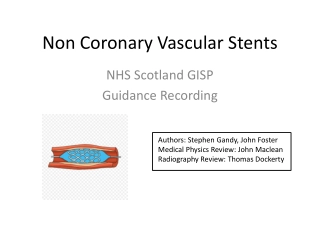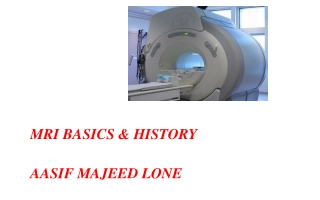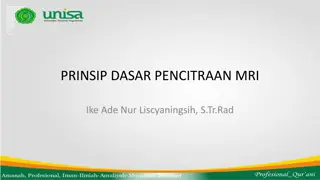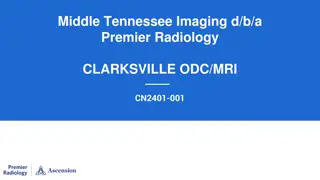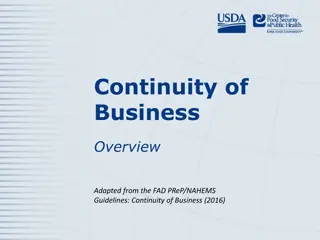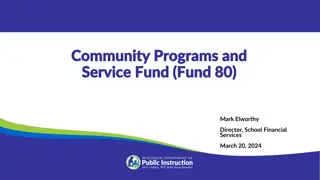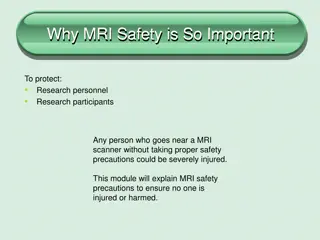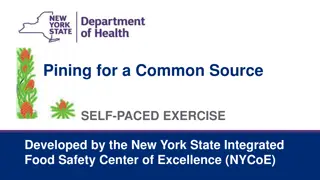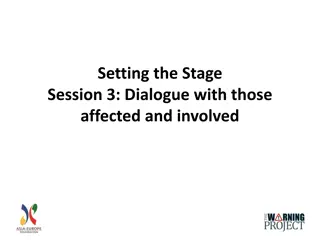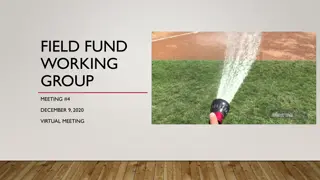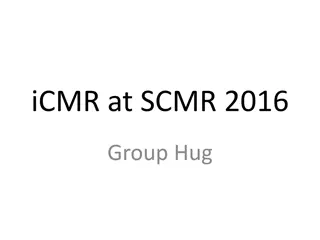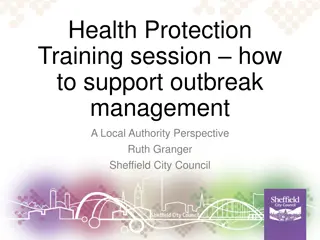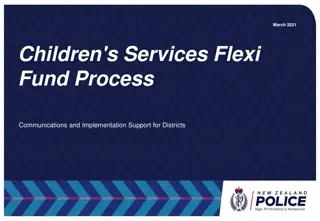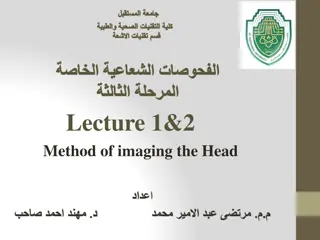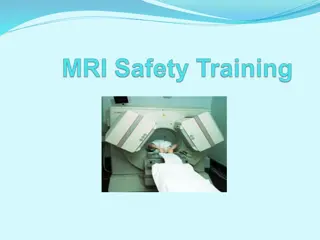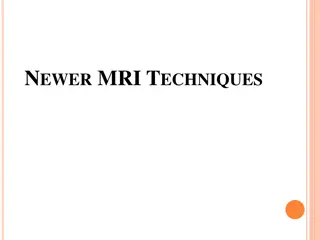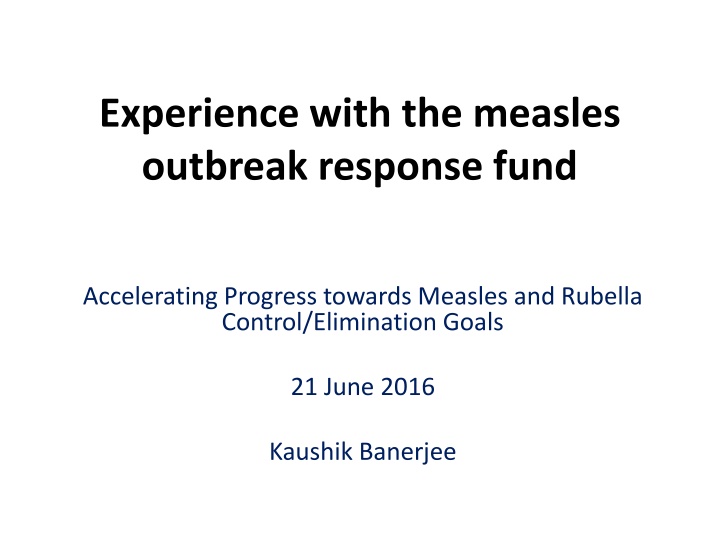
Accelerating Progress towards Measles and Rubella Control/Elimination Goals
Learn about the Experience with the Measles Outbreak Response Fund and how it has contributed to preventing the escalation of measles and rubella outbreaks through rapid responses in various countries. The presentation covers the background, management, funding disbursements, and lessons learned from the initiative.
Download Presentation

Please find below an Image/Link to download the presentation.
The content on the website is provided AS IS for your information and personal use only. It may not be sold, licensed, or shared on other websites without obtaining consent from the author. If you encounter any issues during the download, it is possible that the publisher has removed the file from their server.
You are allowed to download the files provided on this website for personal or commercial use, subject to the condition that they are used lawfully. All files are the property of their respective owners.
The content on the website is provided AS IS for your information and personal use only. It may not be sold, licensed, or shared on other websites without obtaining consent from the author.
E N D
Presentation Transcript
Experience with the measles outbreak response fund Accelerating Progress towards Measles and Rubella Control/Elimination Goals 21 June 2016 Kaushik Banerjee
In this presentation Background How it has worked so far Lessons learned 2 country examples Suggested actions
Background June 2012 GAVI Board approved USD 55m to be managed by MRI Feb 2013 UN Foundation concluded the MOU with GAVI on behalf of the MRI Current funding goes up to 2017 Purpose To enable countries experiencing measles or/and rubella outbreaks to rapidly respond to these while they are still relatively small and localized, to prevent them from developing into large and widespread outbreaks.
Management The MR Initiative founding partners* are responsible for decision on allocation of the outbreak response funds The WHO headquarters, Expanded Programme of Immunization functions as the secretariat for management and reporting of the use of outbreak response funds * MRI founding partners are ARC, CDC, UNF, UNICEF and WHO
How has it worked so far Funded 4 countries in 2013, >$ 7 million provided 5 countries in 2014, >$ 7 million provided 8 countries in 2015, >$15 million provided 3 countries so far in 2016, $2.05 million provided Funded outbreak responses wide age group SIAs
Funds disbursed 35 32.3 30 25 20 15.63 15 10 7.34 7.28 5 2.05 0 2013 2014 2015 2016 Total
Response in DRC Age targeted 6m 9y Cost USD 6.1 million
Response in Vietnam 436 villages in 4 districts and Lao Cai city Cost USD 39,000
Lessons learned Outbreaks reported late (surveillance issues) Political considerations Delays in labelling it as an outbreak Inappropriate small scale responses Proposal often lacking in details, coherence Report Often delayed Short on details
Lessons learned Immunization response Too much, too late Quality suffers Cases continue after response Investigation of outbreaks sub-optimal Data not used to identify gaps in immunity Basic issues need fixing Surveillance, outbreak investigation Immunization systems strengthening
Constraints Fund cannot be used in non-GAVI countries We could not fund Republic of Georgia Syria The Philippines Mongolia Countries graduating out of GAVI support
2 country examples Strong routine with one SIA to fill immunity gap: Republic of Korea Strong routine offering MCV1 and SIAs: Malawi 12
Reported measles cases and measles vaccination coverage, 1990-2013*, Republic of Korea 100 35,000 90 Approach: MCV1+2+SIAx1 30,000 SIA 8-16 Y 2001 80 Number of reported measles cases Measles vaccination coverage (%) 25,000 Birth rate: <11/1000 70 60 20,000 Pop: 48,391,343 50 15,000 40 MCV1: 99% 30 10,000 20 5,000 10 0 0 1990 1991 1992 1993 1994 1995 1996 1997 1998 1999 2000 2001 2002 2003 2004 2005 2006 2007 2008 2009 2010 2011 2012 2013* measles cases measles vaccination coverage measles vaccination coverage 2nd dose SIA 8-16 Y *2013 data through 20.08.2013 13
Proportion of persons aged 718 yr* with measles susceptibility, by age Republic of Korea, 2000 *N = 18,139. Defined as not having anti-measles immunoglobulin G antibody. 95% confidence interval. Source: MMWR 2007; 56:304-307 14
Incidence rate* of reported measles cases, by patient age Republic of Korea, 2000 2001 * Per 100,000 population Source: MMWR 2007; 56:304-307 15
Reported measles cases and measles vaccination coverage, 1990-2013*, Republic of Korea 100 35,000 90 30,000 SIA 8-16 Y 2001 80 Number of reported measles cases Measles vaccination coverage (%) Mean incidence since SIA: 1-4 / million 25,000 70 60 20,000 Small outbreaks since SIA, some linked to importations; nosocomial outbreak in 2007 50 15,000 40 30 10,000 20 5,000 10 0 0 1990 1991 1992 1993 1994 1995 1996 1997 1998 1999 2000 2001 2002 2003 2004 2005 2006 2007 2008 2009 2010 2011 2012 2013* measles cases measles vaccination coverage measles vaccination coverage 2nd dose SIA 8-16 Y *2013 data through 20.08.2013 19.03.2025 SAGE MR WG 25/09/2013 16
Reported measles cases and measles vaccination coverage, 1996-2013*, Malawi 100 40,000 120% admin 99.8% admin 90 SIA < 5 Y 2002 SIA < 5 Y 2005 SIA < 5 Y 2008 35,000 SIA < 15 Y 1998 SIA < 15 Y 2010 80 115% admin Number of reported measles cases 30,000 Measles vaccination coverage (%) 107% admin 89% admin 70 Approach: MCV1+SIAs 25,000 60 50 20,000 Birth rate: 43->44/1000 40 15,000 Pop: 15,882,815 30 10,000 20 MCV1: 96% 5,000 10 0 0 2013* 1991 1992 1993 1994 1995 1996 1997 1998 1999 2000 2001 2002 2003 2004 2005 2006 2007 2008 2009 2010 2011 2012 measles cases measles vaccination coverage SIA < 15 Y *2013 data through 10.09.2013 SIA < 5 Y 19.03.2025 SAGE MR WG 25/09/2013 17
Measles cases by epidemiological week, Malawi, 2009 2010 18
Confirmed measles cases by age, Malawi, 2010 35% Proportion of cases per age group 30% 25% 20% 15% 10% 5% 0% 9 11 m 6-8 m 9 11 m 12 59 m 5 14 y 15 19 y >20 y Adapted from Minetti, Emerg Infect Dis 2013; 19(2):202-9 19
Reported measles cases and measles vaccination coverage, 1996-2013*, Malawi 100 40,000 120% admin 99.8% admin 90 SIA < 5 Y 2002 SIA < 5 Y 2005 SIA < 5 Y 2008 35,000 SIA < 15 Y 1998 SIA < 15 Y 2010 80 115% admin Number of reported measles cases 30,000 Measles vaccination coverage (%) 107% admin 89% admin 70 25,000 60 Outbreak in 2010 affected age groups born in years of low routine coverage (box) (SIA coverage overestimated) Gaps in immunity among Apostolic sects Incidence since 2004 (excluding 2010) 4 / million 50 20,000 40 15,000 30 10,000 20 5,000 10 0 0 2013* 1991 1992 1993 1994 1995 1996 1997 1998 1999 2000 2001 2002 2003 2004 2005 2006 2007 2008 2009 2010 2011 2012 measles cases measles vaccination coverage SIA < 15 Y *2013 data through 10.09.2013 SIA < 5 Y 20
Country experience shows that Rep of Korea: SIAs targeted age groups involved in the outbreak; very low incidence after SIA Malawi: gaps in routine not recognized; age range cases in 2010 matched the age groups covered in 1998 SIA (<90% coverage) Initial outbreak responses with narrow age range, narrow geographic focus, worked locally 21
Suggested actions Outbreaks should be investigated to better define the susceptibility profile of the population Outbreak investigations should aim to uncover the underlying reasons why outbreaks are occurring (e.g. who is transmitting to whom; what are the exposure settings) Resources to be mobilized for a similar fund in non-Gavi eligible countries
Thank you! Merci !

